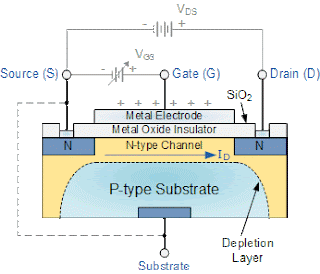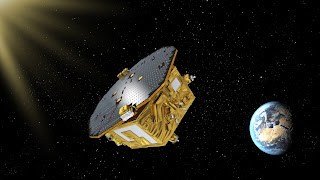
An abrupt tap on the window interrupts my scrolling as the phone nearly falls out of my hand.Standing outside of the car, peering in on me is a fine specimen of a man, the real life, living kind. Yes, I know, it’s weird that I have to specify that he is alive, but hell, I do see dead people!Slowly I crank the window, yes crank, because my baby is an old one, and peek at him through the cracked space.
“Yes?” I ask the stranger.
“I couldn’t help but notice you have been sitting in this car for a while. Is something wrong?” His voice is deep, smooth, and the kind that reaches beneath the layer of my dress and excites a more primal side of myself. I find myself staring at his full lips and licking my own.
“Actually, my car seems to have died.” I kick myself internally for easily offering up the information. Yes, this guy is highly attractive but that doesn’t mean he isn’t completely capable of reaching into my car and trying to slice my throat open. My thoughts briefly go back to a newspaper article about this really twisted serial killer. The guy was sick, strangling girls and leaving their bodies in houses that were listed for sale. I take solace in the fact that his crazy ass is nowhere near my hometown. That is if he hadn’t decided to migrate and take his show on the road.
“Well, perhaps I can help?” He steps back a bit from the window and allows me a full viewing of his body. He is tall, I estimate a few inches over six feet. He has broad shoulders and wears a thin tan shirt that sticks to his body like a second skin. I can see all the contours of the muscles in his arms, chest, abs, and of course, it leads my eyes down his body to his thighs. I can go no further as the car door disrupts my view, but I have seen enough. This tall dark chocolate man with the low cut hair and bright smile looks too good to be true. I mean he looks good enough to taste. I shake that thought off as quickly as it comes to me. This is not the time.
“Unless you have a tow truck in your pocket, I don’t see how.” I joke lightly as a pathetic attempt to distract myself from the specimen in front of me. It’s my thoughts that have gone astray though he isn’t short stopping on the eye strokes. I watch his eyes dart down to my top and back up a few times.
“No tow truck, but I do have a car, maybe you need a jump for the battery?” He smiles and I nod because that smile is both brilliant and enticing.
“We can try it but I can’t say that I’m all that convinced that it will work.” The last jump I got barely took hold and even then I was given a stern warning to replace the part as soon as possible. Do you think I listened? Of course not!
“Great, I’ll be right back.” His retreating form allows me a perfect view of his assets, the firm plump kind that hangs out in the back and just begs to be held on to. I can’t help it, I like a nice ass and his is very nice! It’s the kind of ass that just screams, “This man does squats!”. Damn. I shake my head and try to push away the thoughts yet again. This is highly inappropriate. I don’t know this man, and I am somewhat involved. Even though the man I am with is actually a ghost, and well, how far can that really go, but that is no excuse for acting like a cat in heat.
I sit in the car and wait patiently. Quickly I return to my phone to send a text to Mackie. “If I fo missing, a tall dark stranger in a Kia Soul has taken me, hopefully as his love slave.” She won’t get the message until way later because her phone is locked away as usual during her events. Fingers crossed, I hope for the best.
Three attempts at jumping the battery produce no victory. I get out of the car and watch him work as he attempts yet again to save the day. This car is a goner, but hell, a hot man working on a car is pretty damn sexy. My mind is too busy tracing the outline of muscles in his arms to really give a damn about the dead battery.
“I guess it really is dead,” he says after he slams the hood and returns to my side of the car. He looks a bit defeated. Men and their machines, I will never understand them.
“Yeah, I figured as much. It’s my own fault. The check engine light has been on for, well for far too long. I’ve also gotten a few stern warnings about needing to get work done on it. I just never got around to doing it.” I kick the tire and sigh.
“Well, do you have a way to get home? The least that I can do is offer you a lift.” He smiles and once again, I do an internal black flip, and I stick the landing!
“You may decide to retract that offer when you hear that I live about an hour’s drive south of here.” I smile at him and pull out my phone to once again begin my search for a friend with wheels.
“Yes, perhaps I might, or maybe not, considering I do as well.” He smiles at me and I want him to stop it. Okay, no, I don’t, but it would sure as hell help my efforts to keep a clear head.
“Really?” I give him the side eye because his admission sounds too good to be true.
“Yes, so, Ms….” He trails off as he realizes that he never actually asked for my name.
“Josephine.” I offer it up to him willingly as I am eager to hear my name roll off his tongue and across those sexy lips.
“Josephine,” Hot damn, it sounds just as good as I imagine, if not better.
“Would you like a lift home?”I sigh because I know the smartest thing I can do right now is return to the gallery, wait out the party, and then burden Mackie for a ride, but I don’t want to. I don’t want to go back in there and I don’t want to ruin her night. She should be celebrating not playing chauffeur. I decide to take the risk. Hell, it’s just like hailing a cab or calling an Uber, I’m still putting my life and safety into the hands of a stranger either way. “Okay, sure.” Hell, I know how to protect myself. A girl doesn’t take four years of self-defense classes without picking up a thing or two about fighting off tall sexy men.
“What is your name?” I ask before I turn away to grab my bag out of my car.
“Sam.” He says it and it’s seductive as If he has practiced the sound for years to produce such a quality. “Sam Merrit.”
“Nice name.” I toss a duffel bag at him and he catches it easily. Might as well take as much as possible, I may not see my baby again for a while. I tap the old girl on the hood and walk away.














